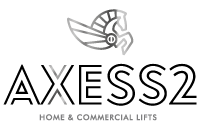Axess 2
Lifts tailored to suit educational buildings
Selecting the correct lift for a school or college is an important task, but it doesn’t have to be tricky. After you have worked out the key requirements and concerns specific to your site, the process soon becomes straightforward. In the following sections, we’ll detail the essential considerations of a commercial lift installation for use in schools and colleges.
LAWS REGARDING ACCESS
Under the Disability Right in Education Act and the Disability Discrimination Act (DDA), controllers, owners and managers of colleges and schools are legally required to offer adequate access for individuals visiting or using their premises who suffer from mental and physical impairments.
CHOOSE A HOME ENHANCING DOMESTIC LIFT THAT’S PERFECT FOR YOU
BUILDING REGULATIONS FOR LIFTS
Educational Buildings are governed by specific building regulations, and this includes lift installations. The Building Regulations Part M concerns the lift’s platform size. The platform must have the capacity to serve user needs in a school or college building while remaining compliant with part M. As a result, lift platforms should not fall short of specific dimensions (1100 x 1400mm).
LOCATION OF LIFT
Deciding where to position a lift within a school or college premises is also important. In certain circumstances, buildings may need to be adapted, so due consideration must be given to whether key areas of may be disrupted by installation works.
In both primary and secondary schools, it is considered best practice to situate the lift in a location where it is less likely to be interfered with by pupils. At Axess 2 we offer platform lifts with a minimal footprint. As a result, they are versatile solutions where the available room is limited. In such cases, we can also provide lifts installed as a part of an external structure to avoid impacting interior space. However, access routes must be considered to make sure the lift can be conveniently installed with minimal adaption to the building.
LIFT SAFETY
Safety is a vital concern regarding all stages from lift design and construction through to installation. While safety measures are important in fitting any lift, they are particularly pertinent in school installations. This is because younger children do not always understand the importance of respecting mechanical solutions like lifts. As a result, measures must be put in place that can minimise any risk of property damage or accidents occurring.
A range of safety features are offered in lift installations these include:
- Full lift shafts
- Handrails and braille pushes
- Locking and parking facility
- Intelligent automatic doors
- Fire doors
- Intercoms and emergency auto-diallers
- UPS backup (Uninterrupted power supply) for power cuts
LOWERING MEASUREMENTS FOR ELECTRICAL EMERGENCIES
At Axess 2, safety is an integral part of the way we work. at the heart of our company’s values. All of the that we design, construct, and fit undergo strict testing at every stage and are CE marked. Additionally, the products we supply comply with British safety regulations.
After a lift installation, schools and colleges must consider if children using wheelchairs are allowed to operate lifts independently or whether they will be helped by support workers. Typically, this decision is impacted by the age and capacity of the child.
STRENGTH, EFFICIENCY, AND DEPENDABILITY
Reliable and robust equipment is imperative when it is used in a college or school setting. Lifts in educational institutions commonly see frequent use from students, faculty members and visitors. As a result, they must operate efficiently. After a rigorous and comprehensive testing process, the platform lifts we provide are durable enough to be depended on for a convenient and consistent service.
LEGAL REQUIREMENTS AND RESPONSIBILITIES
Once an installation is complete schools or colleges have a legal obligation to efficiently maintain the passenger lift onsite as per the Lifting Operations and Lifting Equipment Regulations 1998 (LOLER). These regulations state that a school should nominate a person as the “Duty Holder”. This responsible person will be charged with the safe operation of the school lift and entrusted with the responsibility of legally ensuring that the equipment is regularly and comprehensively assessed by a competent individual independent of any current maintenance contractor employed. If during a routine inspection, a defect is identified, it is the duty holder’s responsibility to report it and take immediate action to resolve the problem before the further use of the lift.
Passenger Lifts
Our Passenger lifts can be used in a wide range of different buildings, including both commercial and residential applications.
Wheelchair Access Lifts
Our wheelchair lifts can be installed in new and existing buildings, complementing and blending into any environment, indoor or outdoors.
Low Pit Lifts
Suitable for lift shafts with dimension restrictions in the pit or at the top of the lift shaft



